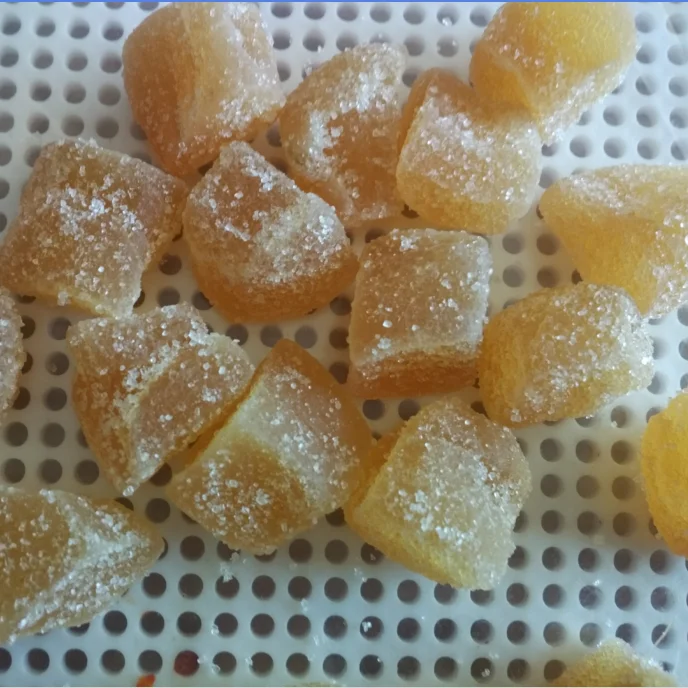
You’ll be able to capture the sweet and spicy taste if you use granulated sugar. Generally, ½ cup of crystallized ginger is equivalent to two tablespoons of fresh ginger root and two tablespoons of sugar. No matter if you used grated ginger root or chopped ones, one thing that you should absolutely get right is the measurement. It will depend on what you’re making, what texture you’re going for, and how big the ginger roots should be.

Either grated or chopped ginger root will work. If you’re looking for the closest substitute to crystallized ginger, then you won’t go wrong with using fresh ginger root. Fortunately, there are a number of options to choose from if you’re looking for substitutes for crystallized ginger.

Drizzle the syrup over fresh fruit, ice cream or chocolate puddings for a deliciously sweet ginger flavour.No matter how appealing it sounds to use crystallized ginger on whatever you’re cooking or baking, not everyone has the time and resources to make it. Uses: Chopped stem ginger can be added to cakes, biscuits, ice cream and a variety of puddings. The syrup is usually quite sweet and provides a good contrast to the spicy, golden nuggets of ginger. StemĪlso known as preserved ginger, stem ginger is young ginger that has been peeled and preserved in sugar syrup. To store: Keep in an airtight jar in a cool, dry place out of direct sunlight. It complements the flavour of many fruits, particularly melon, rhubarb and apple. It is also used in pickles and chutneys and may be included in curry paste or powders. Uses: Ground ginger is used extensively in baking, and is included in many biscuit, cake and pudding recipes. Ground ginger has a sweet, warm aroma and a spicy flavour. It has quite a different flavour from fresh ginger and the two are not interchangeable. Groundįresh ginger is dried and ground to a powder to make ground ginger. To store: Keep in a cool, dry place for up to 2 years. The syrup can also be used in savoury dishes - add a little to stir-fries or Oriental-style soups.

Drizzle over fresh fruits - especially melon or strawberries. Uses: Pour over ice creams, pancakes or waffles. Ginger syrupĪ delicious golden-coloured syrup flavoured with natural ginger, this is a really convenient form of ginger for both sweet and savoury dishes. To store: Keep in a cool, dark place and once opened store in the fridge and use within 6 weeks. To use: Add 2 tsp of fresh ginger in sunflower oil to a recipe for 4. Uses: Add to stir fries, soups, curries and savoury dishes or wherever a recipe lists fresh ginger. This convenient form of fresh ginger (sold in a jar with the herbs and spices) can simply be added to dishes when the flavour of fresh root ginger is required. Then either grate or finely chop the flesh.
#Crystallized stem ginger skin#
To prepare: Peel or scrape off the skin from fresh ginger. Unpeeled ginger can also be wrapped in foil and stored in the freezer for up to 2 months.

To store: Keep in the fridge for 2-3 weeks, wrapped in clingfilm or in a paper bag. It is a popular addition to stir-fries and noodle dishes. Uses: Chopped or grated fresh ginger is included in a variety of fish, seafood, meat, poultry and vegetable dishes. Ginger is included in a wide variety of Indian and Oriental savoury dishes. When buying ginger look for pieces with a smooth skin and a firm texture, with no signs of shrivelling. It has a refreshing aroma with a hint of citrus and has a knobbly appearance, a thick skin and a light yellow flesh. Fresh ginger is actually the root of the plant and is often known as root ginger. Ginger is a tropical plant grown in India, China, Jamaica and more recently in Australia too. Chop and sprinkle over ice cream or fruit to add a sweet tangy ginger flavour. Uses: Eat as a sweet or dip in dark chocolate and serve with coffee for an after dinner treat. Pieces of candied ginger are rolled in fine cane sugar to make this delicious sweet.


 0 kommentar(er)
0 kommentar(er)
